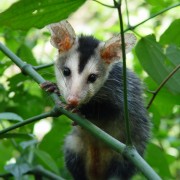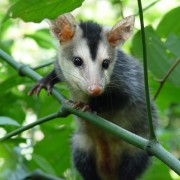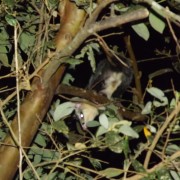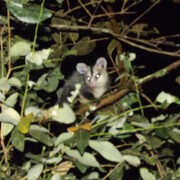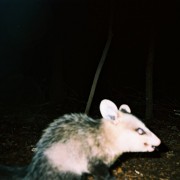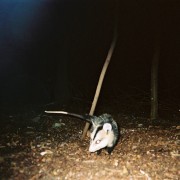Biodiversity
 White-eared opossum
Didelphis albiventris | Lund, 1840
White-eared opossum
Didelphis albiventris | Lund, 1840
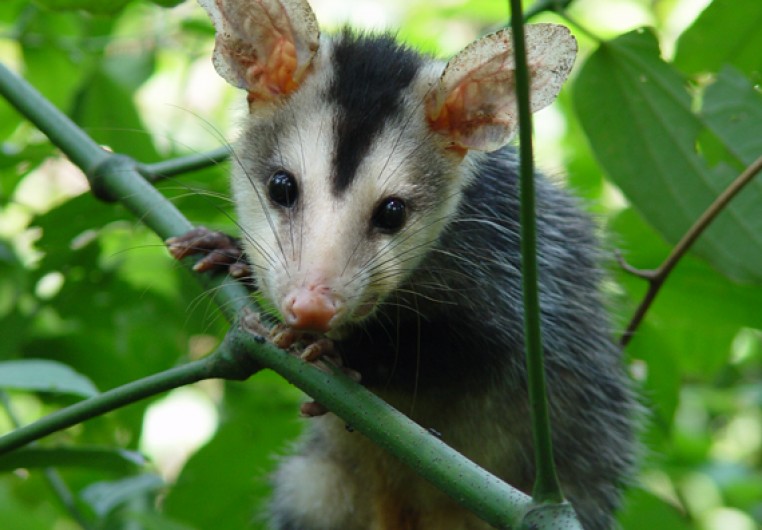
Characteristics: Slightly smaller than the other members of its family, it measures about 40cm in length. It has white ears and a dark stripe on its face, with darkish spots around the eyes and extending to the base of the ears, it has and prehensile tail with fur covering up to 2/3 of the baseline and bare on the rest. Females have marsupial pouches, the openings of which face the anterior end.
Distribution: Mato Grosso and Central Brazil, but also in Venezuela, Colombia, Ecuador, Peru, Bolivia, Paraguay, Uruguay, and Argentina.
Habitat: Areas modified by man, Savanna fields, savanna woodland, savanna, forests, palm tree forests, and secondary vegetation.
Habits: Crepuscular and nocturnal species, seeking shelter in hollow trees, among tree roots or under fallen logs during the day. It is usually solitary, except in the breeding season. When threatened, it plays dead and then runs away.
Diet: Omnivorous, feeding on small birds, rodents, lizards, frogs, insects, fruits, roots, and when living near waterways, on crabs; it is often blamed for the predation of poultry, especially chickens.
Breeding: The gestation period lasts 11 to 12 days and litters add up to 18-21 cubs, which, while embryonic, are able to enter the pouch, where they hang on to the teats for 70 days. Thereafter, they go out for short periods, always keeping a short distance from their mothers. On average, only 9 of 18 survive.
In the UFRA area: This mammalian species is rated as rare because it was only seen once. Its spatial distribution is restricted to exotic woods.




